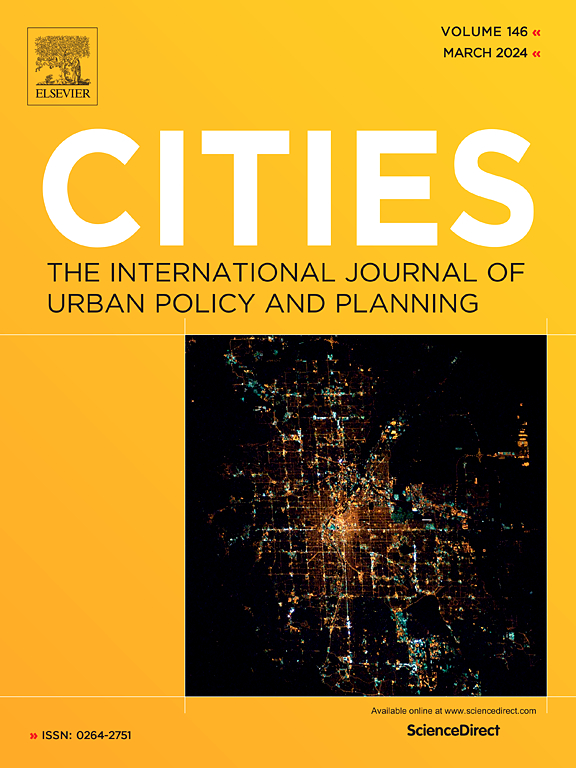性别化的城市空间:通过时间、空间和行为揭示性别隔离——以珠海为例
IF 6.6
1区 经济学
Q1 URBAN STUDIES
引用次数: 0
摘要
男性和女性的不同活动塑造了城市环境的性别特征,导致了揭示空间不平等的隔离。最近关于性别活动模式的研究往往依赖于统计数据或居住数据,缺乏时空视角。为了解决这些差距,本研究从空间、时间和行为维度对中国珠海市的性别隔离进行了分析。首先,使用相对比例法在包裹层面评估性别构成。其次,通过地理区划考察工作日-周末变化和区域差异。利用遗传算法分析居民的出行网络,揭示出不同性别的出行模式。结果表明,性别结构的空间分异显著,中心-外围隔离格局进一步加剧了流动性。过渡区和特定土地利用地区的性别构成受社会分工和就业偏好的影响而随时间演变。本研究提供了一个动态的城市性别隔离模型,通过时间、空间和行为的整合为性别不平等提供了新的视角。研究结果为旨在促进性别平等城市的城市规划和可持续发展战略提供了参考,从性别角度加深对空间权力不平衡的理解,并有助于在空间正义理论框架内讨论性别问题。本文章由计算机程序翻译,如有差异,请以英文原文为准。
Gendered urban spaces: Unveiling gender segregation through time, space, and behavior - A case study of Zhuhai, China
The differing activities of men and women shape the gendered characteristics of urban environments, leading to segregation that reveals spatial inequalities. Recent studies on gendered activity patterns often rely on statistical or residential data and lack a spatiotemporal perspective. To address these gaps, this study analyzes gender segregation in Zhuhai, China by integrating spatial, temporal, and behavioral dimensions. First, gender composition is assessed at the parcel level using the relative proportion method. Next, weekday-weekend variations and regional disparities are examined through geographical regionalization. A genetic algorithm is employed to analyze residents' travel networks, revealing gender-specific mobility patterns. The results highlight significant spatial differentiation in gender structure, with a center-periphery segregation pattern that mobility further accentuates. Gender composition in transitional zones and specific land-use areas evolves over time, influenced by the social division of labor and employment preferences. This study offers a dynamic model of urban gender segregation, providing new insights into gender inequality through the integration of time, space, and behavior. The findings inform urban planning and sustainable development strategies aimed at fostering gender-equitable cities, deepening the understanding of spatial power imbalances from a gender perspective, and contributing to the discourse on gender issues within the framework of spatial justice theory.
求助全文
通过发布文献求助,成功后即可免费获取论文全文。
去求助
来源期刊

Cities
URBAN STUDIES-
CiteScore
11.20
自引率
9.00%
发文量
517
期刊介绍:
Cities offers a comprehensive range of articles on all aspects of urban policy. It provides an international and interdisciplinary platform for the exchange of ideas and information between urban planners and policy makers from national and local government, non-government organizations, academia and consultancy. The primary aims of the journal are to analyse and assess past and present urban development and management as a reflection of effective, ineffective and non-existent planning policies; and the promotion of the implementation of appropriate urban policies in both the developed and the developing world.
 求助内容:
求助内容: 应助结果提醒方式:
应助结果提醒方式:


